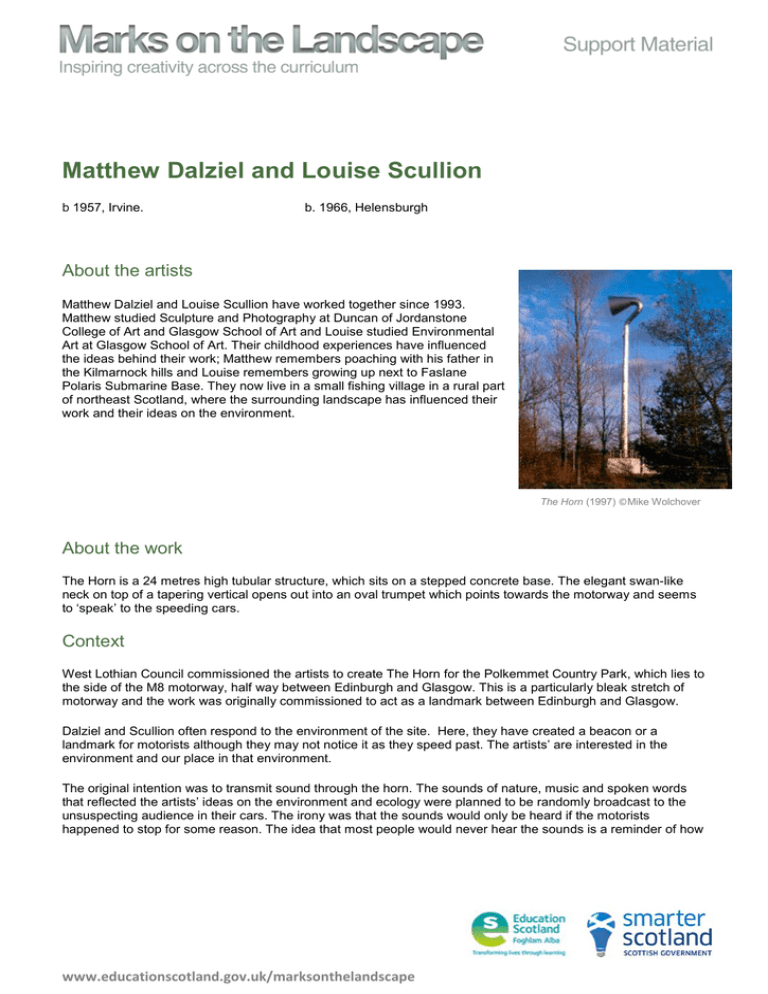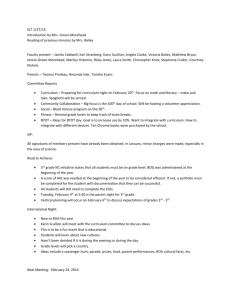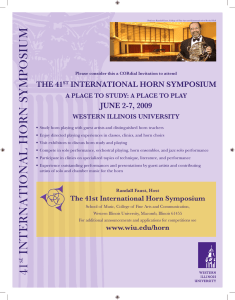Matthew Dalziel and Louise Scullion About the artists
advertisement

Matthew Dalziel and Louise Scullion b 1957, Irvine. b. 1966, Helensburgh About the artists Matthew Dalziel and Louise Scullion have worked together since 1993. Matthew studied Sculpture and Photography at Duncan of Jordanstone College of Art and Glasgow School of Art and Louise studied Environmental Art at Glasgow School of Art. Their childhood experiences have influenced the ideas behind their work; Matthew remembers poaching with his father in the Kilmarnock hills and Louise remembers growing up next to Faslane Polaris Submarine Base. They now live in a small fishing village in a rural part of northeast Scotland, where the surrounding landscape has influenced their work and their ideas on the environment. The Horn (1997) ©Mike Wolchover About the work The Horn is a 24 metres high tubular structure, which sits on a stepped concrete base. The elegant swan-like neck on top of a tapering vertical opens out into an oval trumpet which points towards the motorway and seems to ‘speak’ to the speeding cars. Context West Lothian Council commissioned the artists to create The Horn for the Polkemmet Country Park, which lies to the side of the M8 motorway, half way between Edinburgh and Glasgow. This is a particularly bleak stretch of motorway and the work was originally commissioned to act as a landmark between Edinburgh and Glasgow. Dalziel and Scullion often respond to the environment of the site. Here, they have created a beacon or a landmark for motorists although they may not notice it as they speed past. The artists’ are interested in the environment and our place in that environment. The original intention was to transmit sound through the horn. The sounds of nature, music and spoken words that reflected the artists’ ideas on the environment and ecology were planned to be randomly broadcast to the unsuspecting audience in their cars. The irony was that the sounds would only be heard if the motorists happened to stop for some reason. The idea that most people would never hear the sounds is a reminder of how www.educationscotland.gov.uk/marksonthelandscape technology has affected our interaction with nature. The sound might be seen to represent the unheard cry of things forgotten in man’s greed to advance technically at all costs. Materials and processes The Horn is made from stainless steel, which has a clear association with the industry of the area. The use of a sound recording was planned as an integral part of the work although this no longer functions due to technical constraints. ©Dalziel & Scullion www.educationscotland.gov.uk/marksonthelandscape



